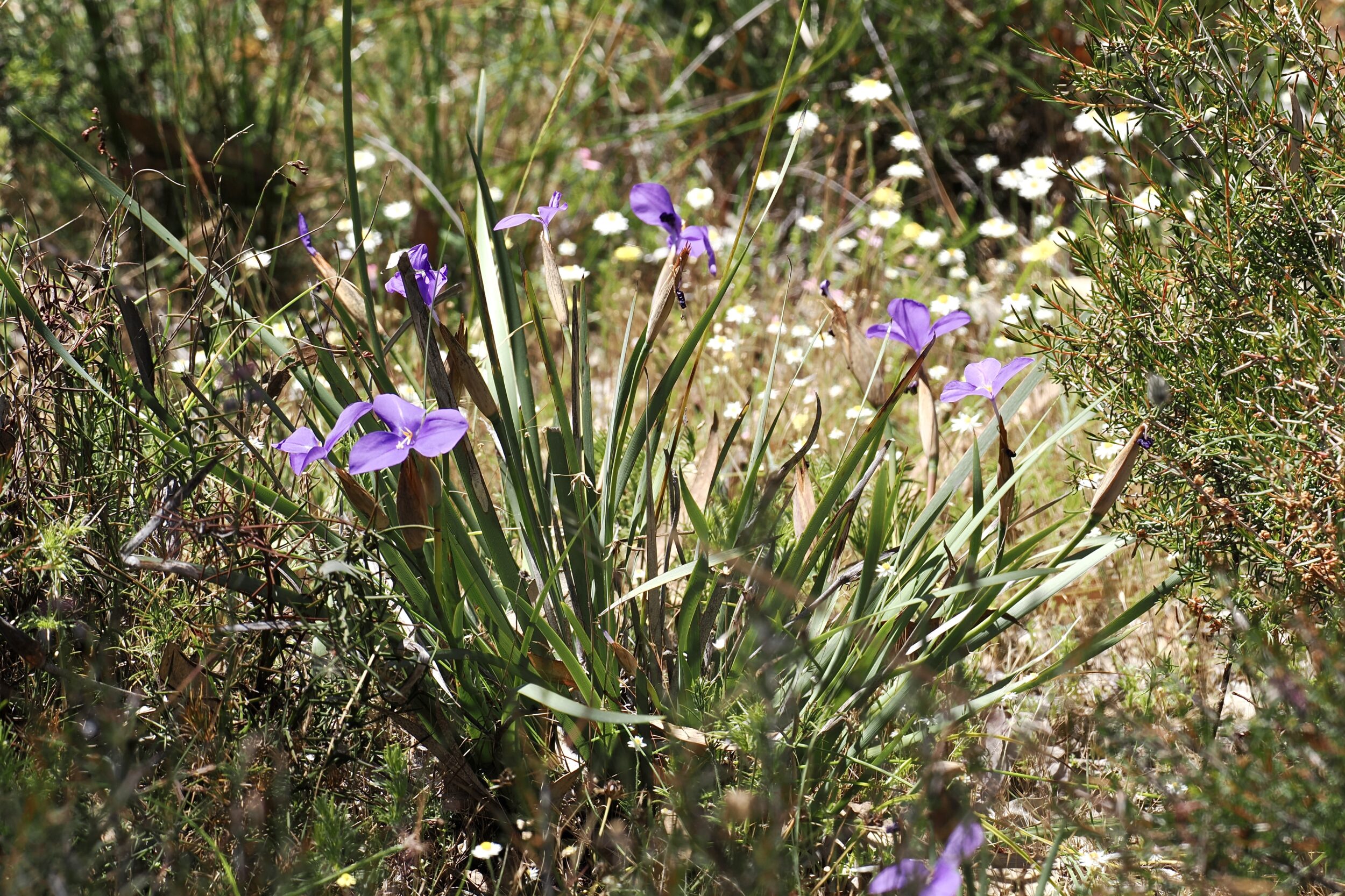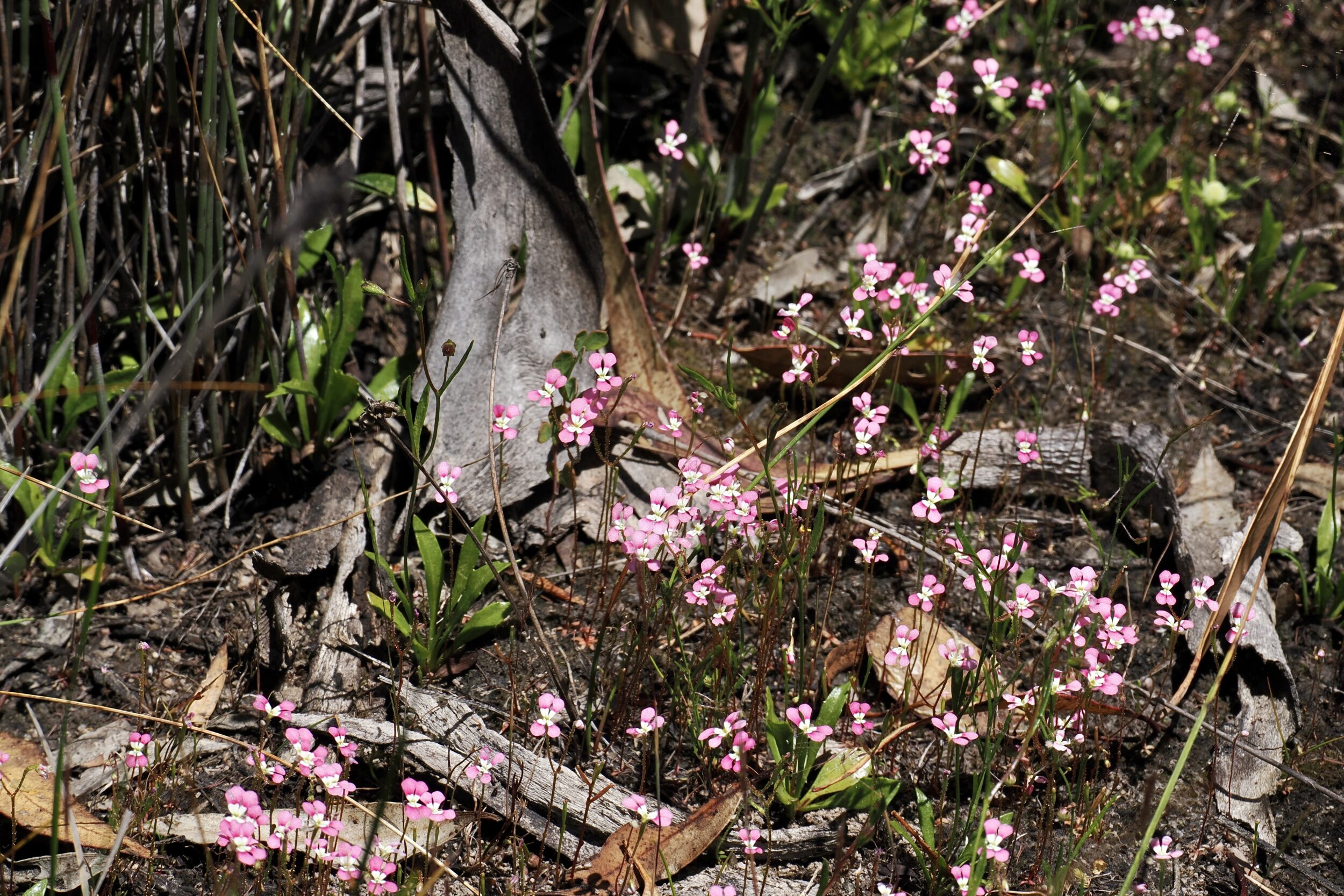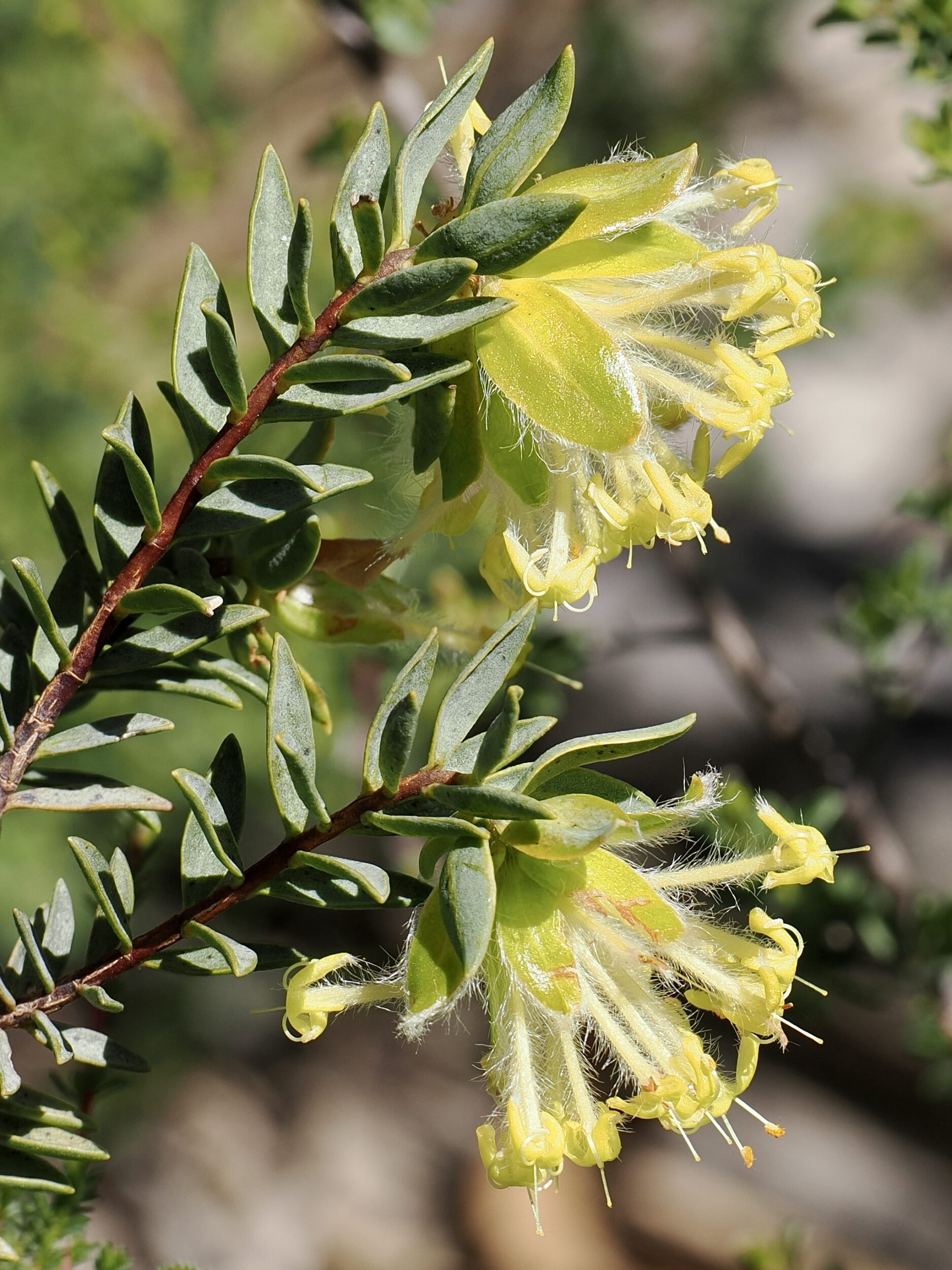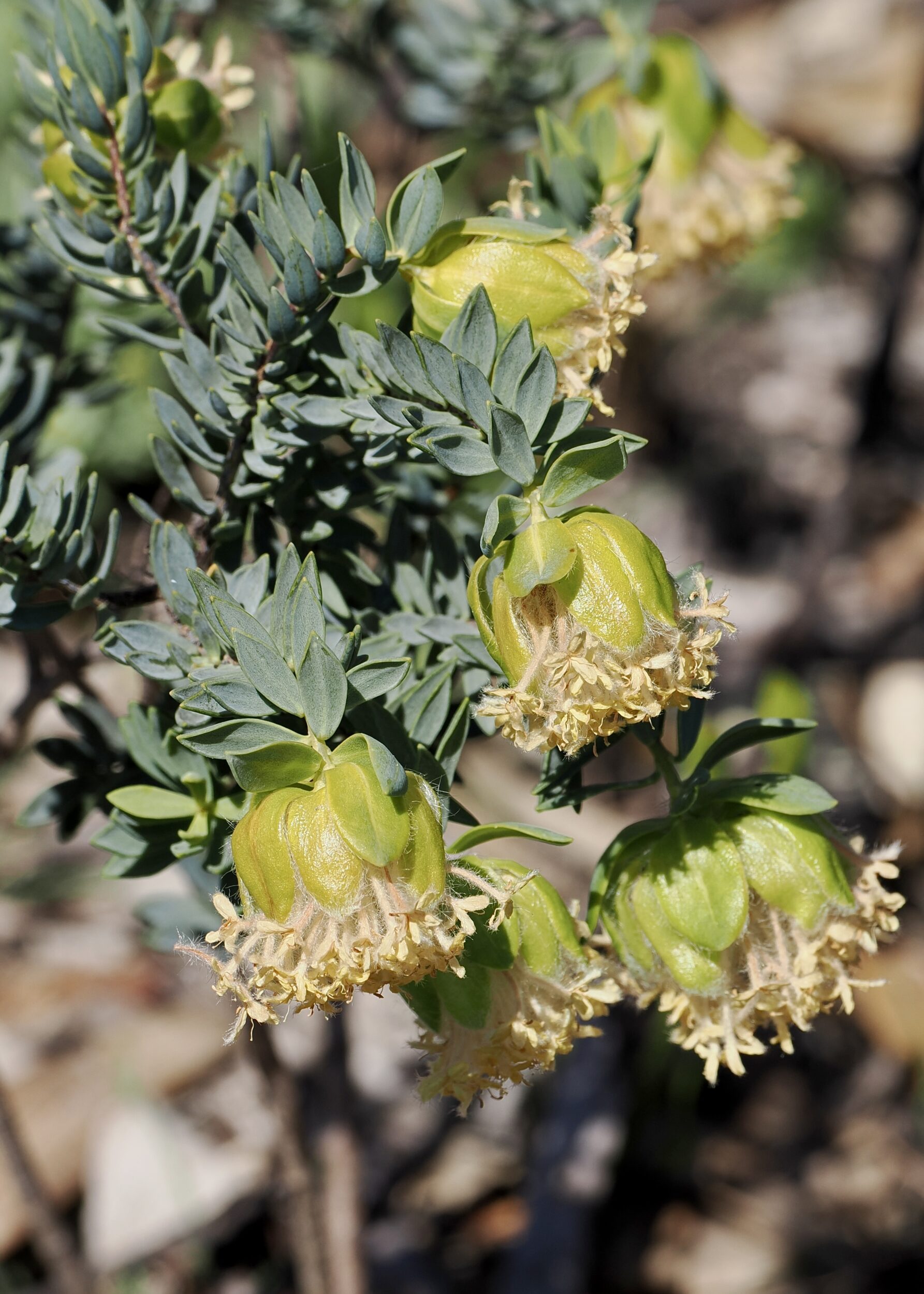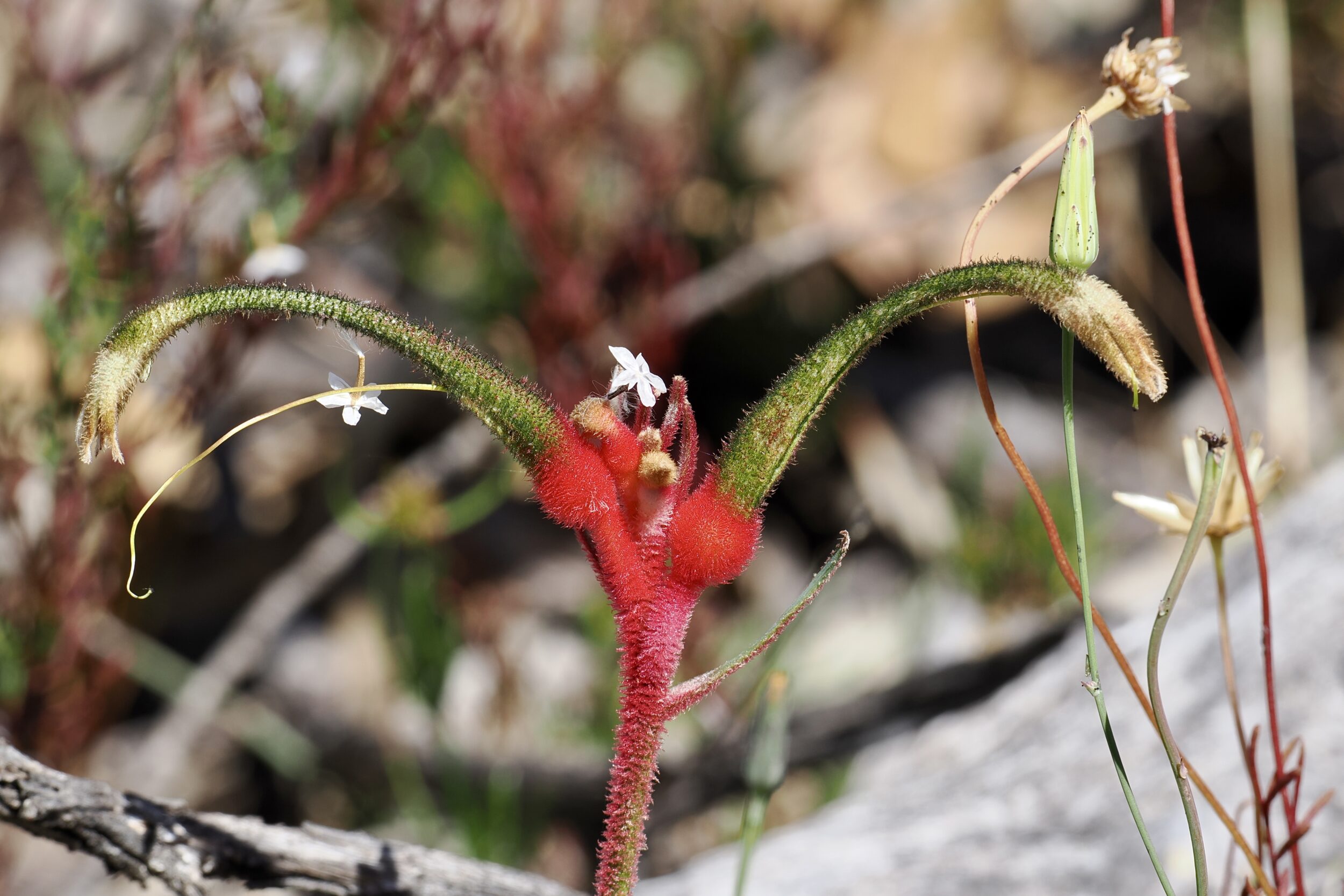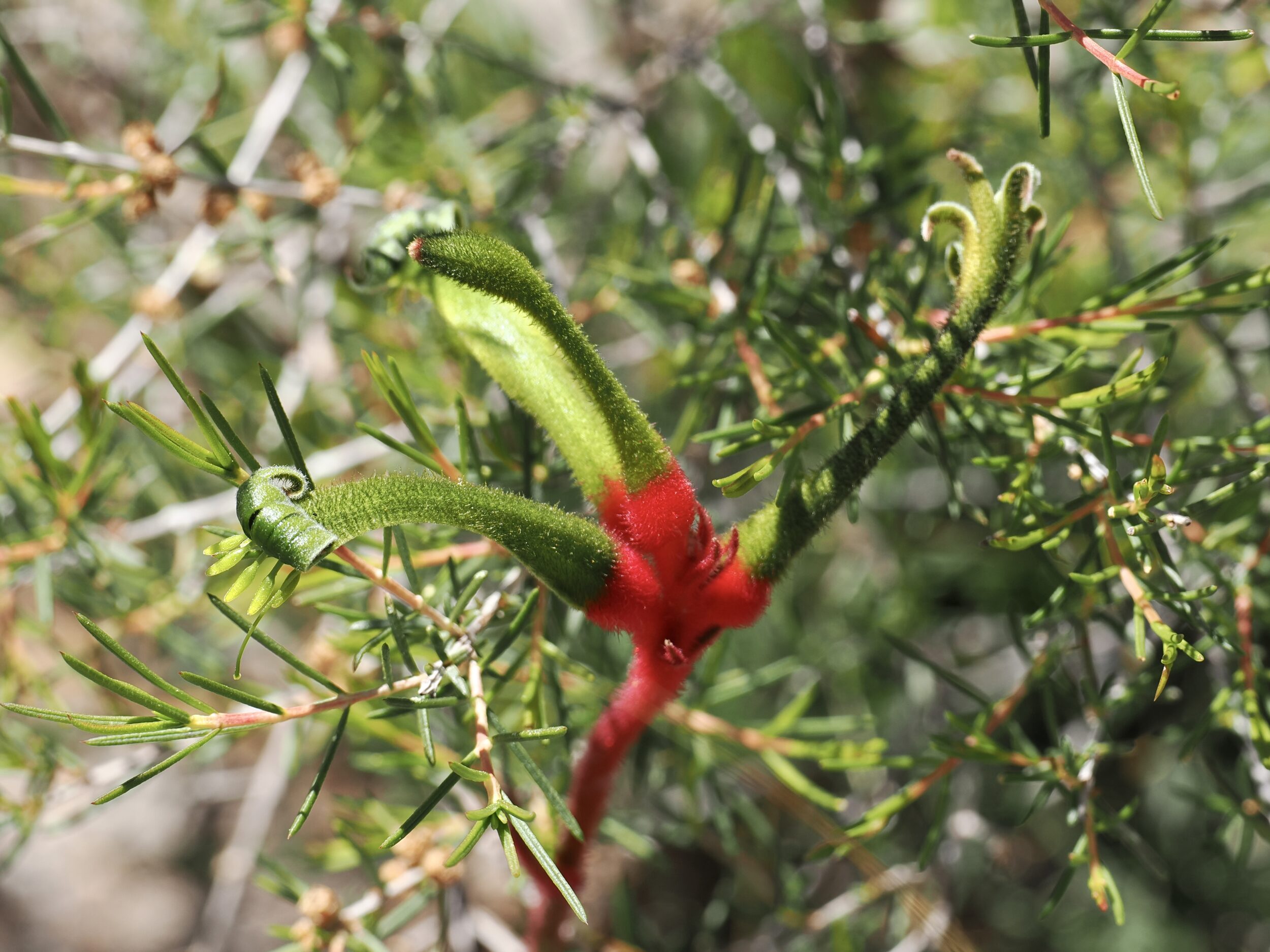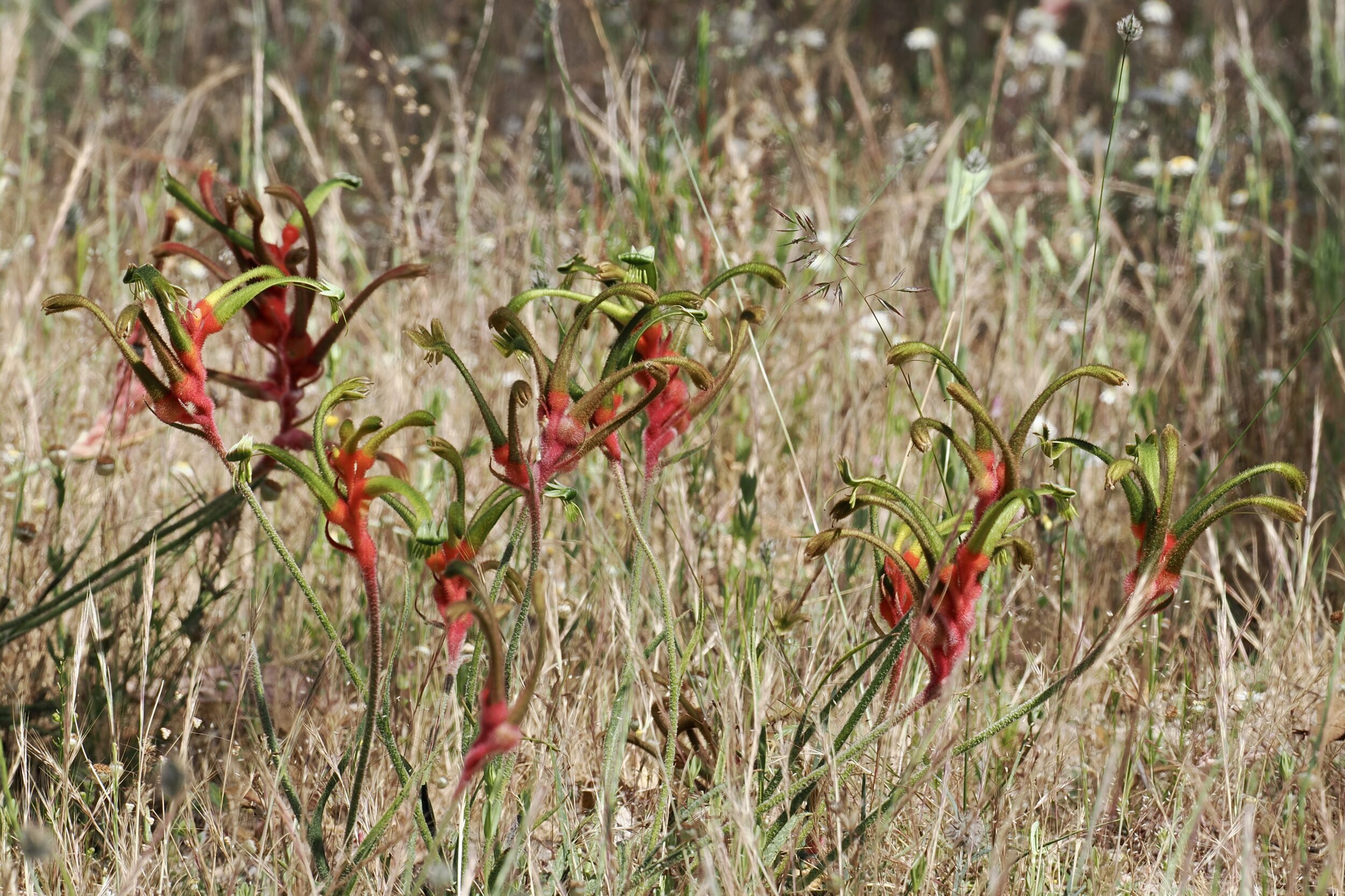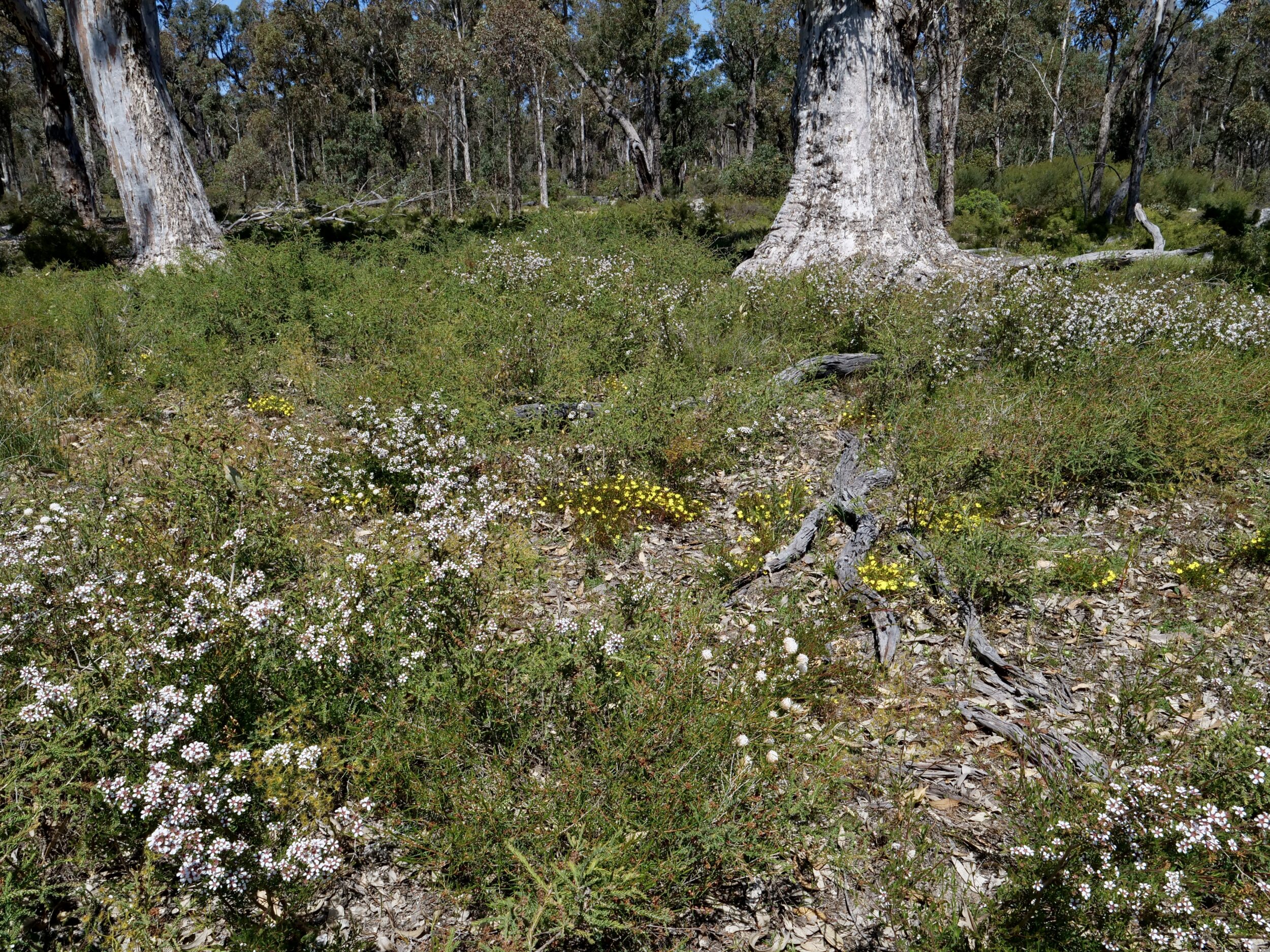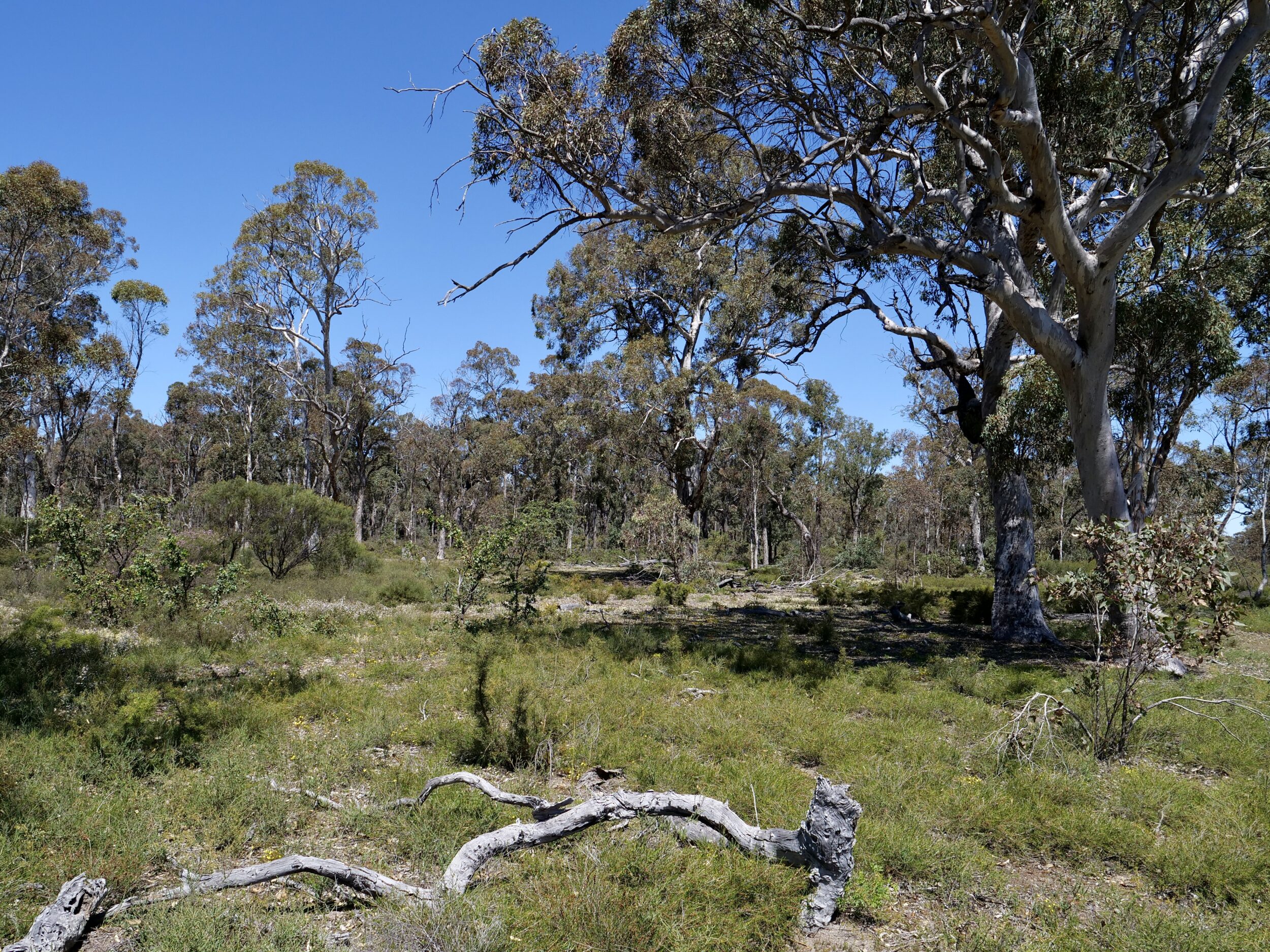Most of southwest Western Australia has a very extreme version of a so-called “Mediterranean” climate.
There are huge variations from one year (or sequence of several years) to another.
However, in a “proper” year much more than half of the annual rainfall arrives in June-July-August, when the weather is relatively cool.
In December-January-February it is “normally” very hot, and rain falls hardly at all.
Very few watercourses flow “permanently”; to label more than a few of them as “rivers” is to indulge in flattery…or wishful thinking.
There are, however, many modest, so-called “winter creeks”.
In many years, flowering plants and grasses “get cracking”, to take advantage of the “window” when such a creek is no longer flowing, but its bed is still damp-ish, and the weather is not yet ferociously hot.
The featured image is a “window” into that very “window”.
Comments closed